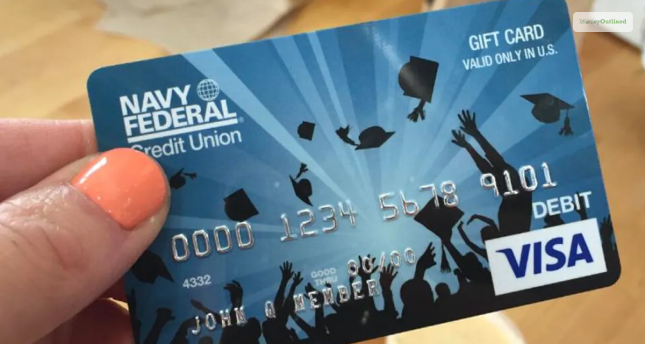Table Of Contents
Savings Deposit Program: Who Can Apply For It And What Are The Benefits?
The Savings Deposit Program, or the SDP, is a special savings program that is particularly designed for members of the military that serve in designated combat zones. The savings deposit program is one among the multiple benefits that the federal government provides to service members to help them with their financial goals further.
These unique savings plans have particular guidelines to make contributions and withdrawals, additionally with rules as to who may contribute to them.
Points To Remember
- The Savings Deposit Program is a unique savings program for military members that serve in selected combat zones.
- This military program allows members to earn interest on deposits; however, there are rules regarding contributions and withdrawals that are mandatory to be followed.
- The SDP is additionally offered alongside other savings benefits, including the Thrift Savings Plan or the Federal Retirement Plan.
- The servicing members are required to meet all the eligibility criterias to be able to make contributions to a special savings plan.
Read More: Financial Tips: Outline Personal Finance Using These Financial Tips
What Is A Savings Deposit Program?

The Savings Deposit Program is a unique savings plan that is offered by the U.S. Department of Defense to the members of the uniformed services. The only goal of this program is to help eligible personnels of the U.S. military to build their financial savings.
Any service member may contribute to the Savings Deposit Program if they:
- If the member is serving in an SDP-eligible combat zone.
- Have a deployment period of at least 30 consecutive days or one in three consecutive days.
- If the member receives Hostile Fire Pay.
The military members that are considered eligible to contribute to any of these criterias may do so via any military finance officer in a theater.
Savings Deposit Programs Deposits And Withdrawals

The Savings Deposit Programs have instructions regarding contributions and withdrawals. Military members that have access to one of these savings accounts can deposit a total of up to $10,000.
These contributions may be made in cash, checks, or through allotments. The allotments may, however, change depending on the financial situation of the member, and they cease to receive the benefits of this savings account once they quit the combat zone.
However, the reason why one must participate in these programs is: SDP accounts have a flat rate of earning of 10% interest annually, which puts them quite higher than all the typical interest rates related to not just traditional savings accounts but also the special high-yielding savings accounts too.
The Department of Defense rules require the Savings Deposit Accounts to be deactivated and all the funds to be returned to the service members through direct deposit exactly 120 days after quitting the combat zone. However, service members may withdraw the funds from a special savings plan before leaving the combat zone.
Early withdrawals are allowed only under the following circumstances:
- When The Account Balance Reaches $10,000
- In such a case, the excess funds may be withdrawn quarterly.
- Emergencies, which include-
Emergencies
Withdrawals in case of emergencies are allowed only if the approval comes from a commanding officer and is considered crucial for the health and the welfare of the member or their family.
If the member falls within the 120-days spectrum after quitting the combat, they can request an early withdrawal. This request may be made automatically through the online myPay account or through email, regular mail, or fax. The requests are to be directed to the Defense Finance and Accounting Service, situated in Cleveland.
Typically, balances are returned by direct deposits unless a paper check is requested. In case of a direct deposit, the member is required to provide the name, account number, and routing number of the designated bank. In case of a paper check, the Defense Finance and Accounting Service is to be provided with the mailing address of the requesting member.
Alternative Military Savings Options

The Savings Deposit Program is a unique savings option for members of the military that are deployed in combat zones. However, the SDP is not the only way of saving funds if someone is serving in the military.
There are other alternatives for them to consider, which include:
- Military Retirement Benefits
- Thrift Savings Plan
- Military Savings Account For Banks Or Credit Unions
Let us now have a more detailed look at how these military savings plans operate.
Military Retirement Plans

Military personnel may take advantage of the retirement benefits using the Legacy Retirement System or the Blended Retirement System, based on their time of enlistment.
The Legacy Retirement System covers those military personnel that were enlisted before 31st December 2017; however, the individuals that started serving in the military after January 1st, 2018, are automatically covered under the Blended Retirement System.
The LRS is a defined benefit plan. If an individual has served in the military for over 20 years and is covered under this plan, they will receive a lifetime monthly annuity at retirement.
Annuity benefit funds depend on the years of service and the average of the highest basic pay of 36 months.However, the BRS is a merger of a defined combination plan and a defined benefit plan.
However, the BRS is a merger of a defined combination plan and a defined benefit plan.
Thrift Savings Plan

The Thrift Savings Plan is a defined contribution plan that operates like a 401(k). Military personnel choose from traditional TSP or Roth TSP and contribute at the minimum rate of 1% of base pay.
While a traditional TSP contribution is made on a pre-tax basis, Roth TSP contributions are made based on post-tax dollars.
Military Savings Account For Banks Or Credit Unions

Along with SDPs, military personnel may also get savings accounts at banks or credit unions. Multiple financial institutions provide savings accounts for military members and their families.
These special military banks offer special benefits, like fee waivers or APY [annual percentage yield] for military savers.
Read More: What Is 529 College Savings Plan? Does It Really Work?
The Bottom Line
The Savings Deposit Program makes it easier for military personnel that are serving in eligible combat zones to save some extra funds or the entirety of their base pay while getting the advantages of highly competitive interest rates.
However, only the members serving in the combat zones may apply for the Savings Deposit Program. But, there are other programs that military personnel may still get to apply in order to grow their savings.
While looking for these accounts, it is always better to look around. Do some research to get the best rates of interest at the lowest fees.
Read Also:











Leave A Comment